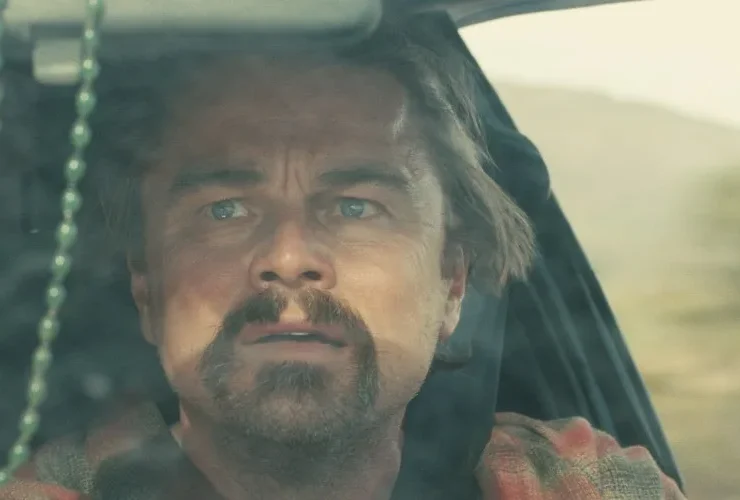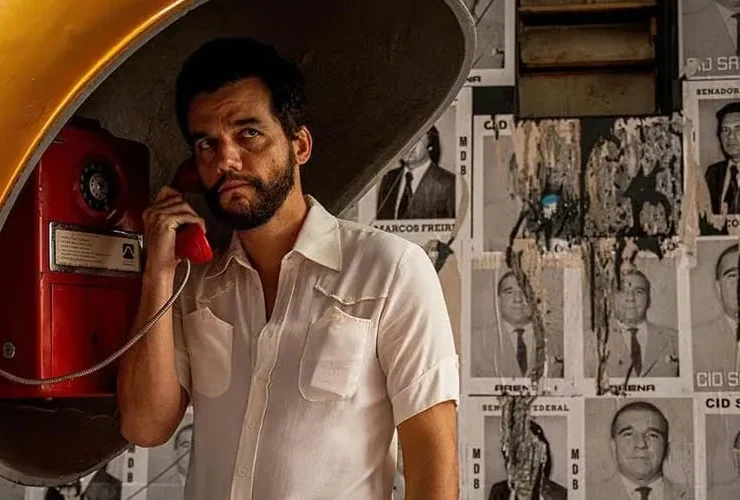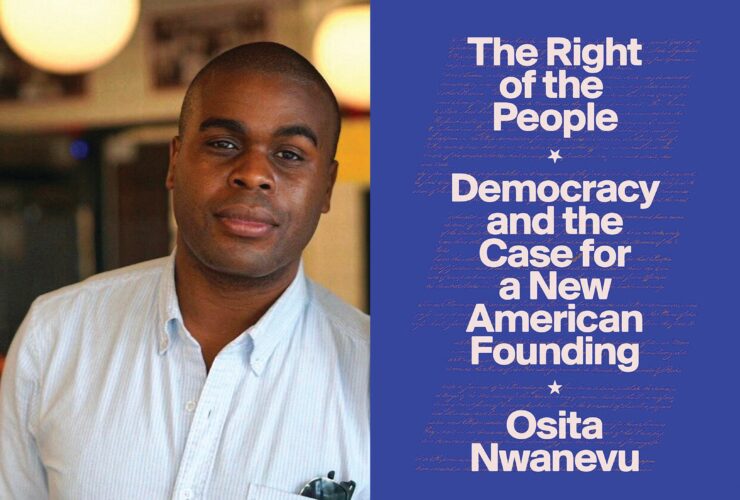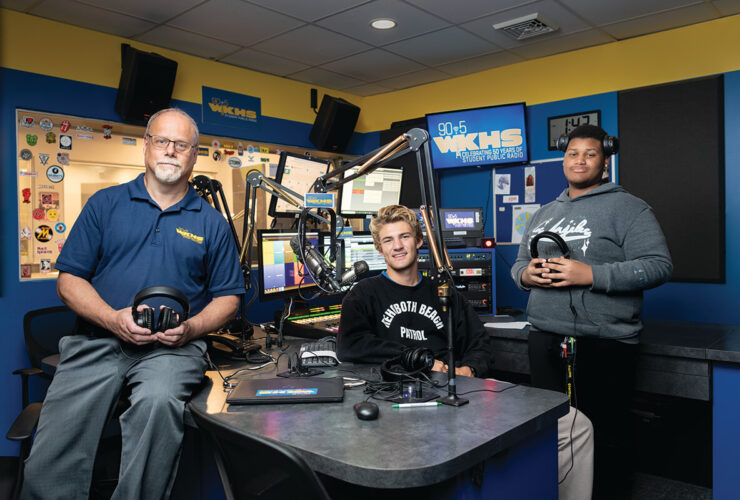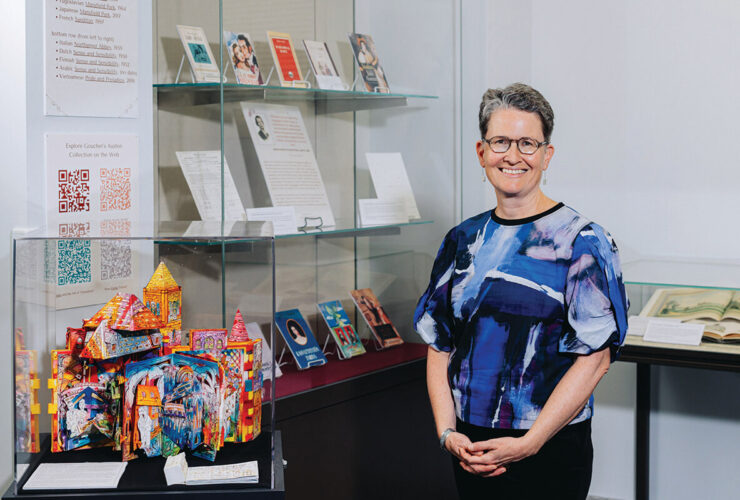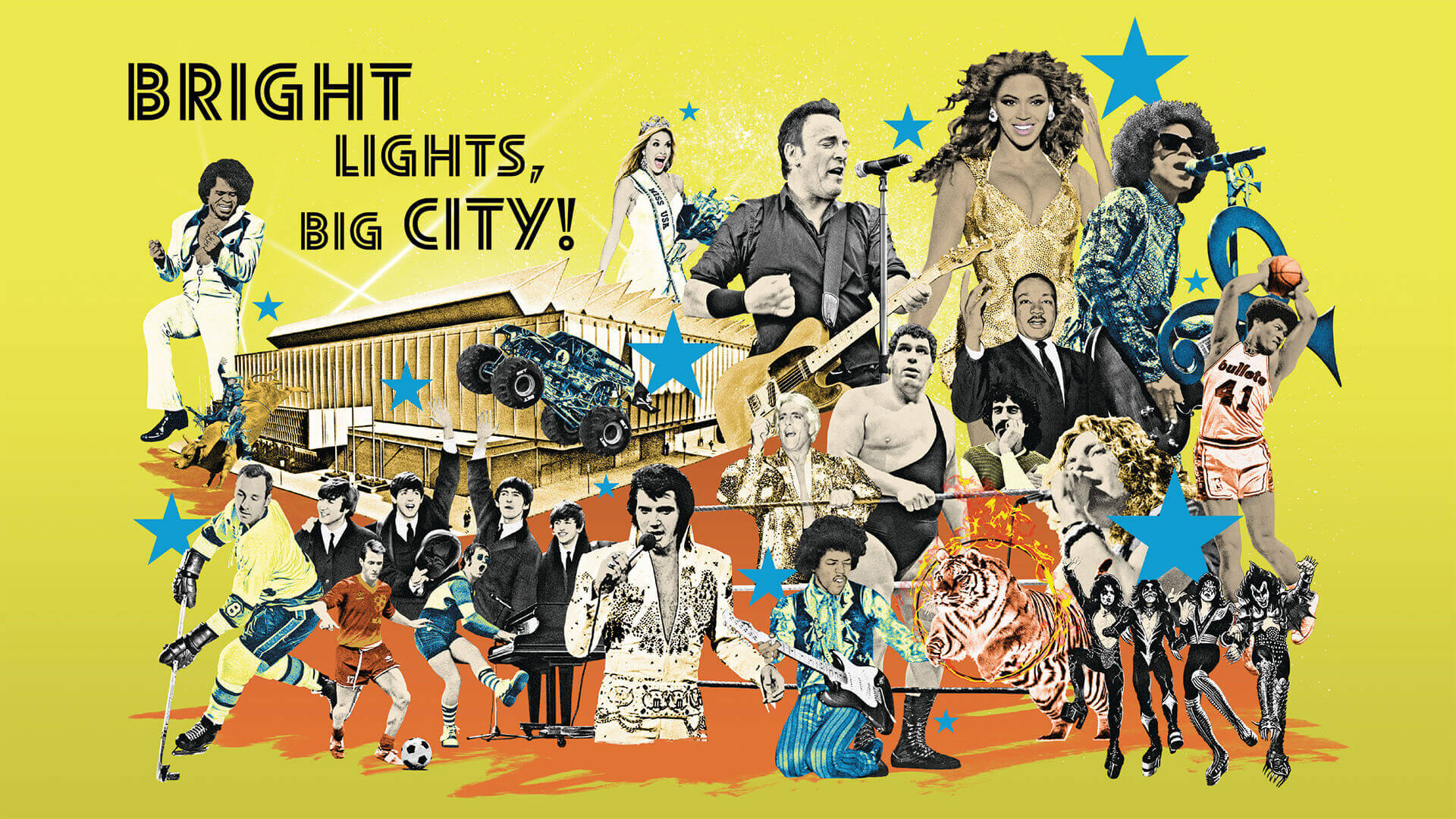
Arts & Culture

Will a reborn former Civic Center finally make Baltimore a major tour stop and spark a downtown renaissance?
By Ron Cassie
Illustration By Ryan Olbrysh
Opening Spread
Originally Named The Civic Center, The Building Newly Renamed The CFG Bank Arena Has Hosted The Biggest Acts In Pop Music As Well As A Bevy Of Local Sports Teams And A Wide Range Of Events.
Left Side, from left, James Brown/Wiki Commons: Heinrich Klaffs; Bull Riding/Courtesy Of Pbr Media; Willie Marshall: Baltimore Clippers/Wiki Commons; Tim Wittman/Courtesy Of Baltimore Blast; Beatles/Wiki Commons: United Press International; Elton John/Wiki Commons/Yabosid; Elvis Presley/Wiki Commons: rca Records; Grave Digger/Wiki Commons: Kevin Cabral; Miss Usa/Ap Photo: Chris Gardner. Right Side, Clockwise from top, left: Bruce Springsteen/Wiki Commons: Takahiro Kyono; Beyonce/Shutterstock; Prince/Getty Images; Wes Unseld/Usa Today Sports ©Malcolm Emmons; Kiss/Getty Images; Tiger/Shutterstock; Jimi Hendrix/Wiki Commons: Marjut Valakivi; Ric Flair/Mediapunch Inc/Alamy Stock Photo; Andre The Giant/Hbo Sports; Mlk: Library Of Congress: Dick Demarsico, World Telegram Staff Photographer; Frank Zappa/Herb Cohen Management; Robert Plant/Dina Regine.

rank Remesch has seen it all. The general manager of the venue originally known as the Civic Center started working at the 60-year-old institution as an electrician in 1988, three years out of Overlea High School. He was there when Bryant “Big Country” Reeves, Oklahoma State’s 7-foot, 290-pound center shattered a glass backboard during warm-ups for the 1995 NCAA tournament, forcing Remesch, then the operations manager, to put his only spare into action. “I had to ask him not to do that again,” he recalls with a wry smile. “Or we weren’t going to have a tournament.”
Remesch was there when the franchise formerly known as the Baltimore Bullets returned to town and an unexpected weather front inside the arena threatened to nix the game. “The basketball court was laid overtop our ice, which wasn’t unusual, we had Ice Capades or something that week,” he recalls. “It’s the middle of winter and a heat wave hits, and suddenly it’s raining in the building. We’re running around with towels trying the keep the floor dry and I’m thinking someone is going to break his leg after they tip-off. Fortunately, as the sun went down, temperatures fell again, and we got the game in.”
Once, a circus elephant wrecked an arena phone booth, trapping an employee who was making a call. Monster trucks? Remesch has watched them careen into the walls. “It’s the dust those events leave behind,” he says, shaking his head. “It’s like nuclear fallout. You clean the building top to bottom and somehow there’s more the next day.”
Ah, but he had a hand in the triumphs, too. Like convincing the Rolling Stones to play in 2006—41 years after the sempiternal bad boys of the British Invasion first played Baltimore. For two decades, the city had been nothing more than a tertiary market, but Mick and Keith literally delivered A Bigger Bang (the album they toured on that year). Remesch had taken over GM duties two years before and had been trying to land the Stones from day one, sending their agent a poster from their original Civic Center show and offering to give away the house. He believed if the Stones came and put on a good show, other big-name acts would follow. Incredibly, it worked.
After 20 years of Disney on Ice, indoor soccer and lacrosse, the occasional basketball and hockey game, wrestling, circuses, and rodeos—admittedly all great fun, if not glamorous—the city became a music market again overnight.
Sure, most big tours still hopscotched us. But after Mick and the boys came to town, we went from a tertiary market to a solid secondary one. Springsteen returned. Then Stevie Wonder. The Eagles, too. Garth Brooks did five sold-out shows. Prince visited for a “Rally 4 Peace” concert in 2015 and Tom Petty celebrated the 40th anniversary of Damn the Torpedoes in 2017. Beyonce and Jay-Z both came (separately).
In fact, three times between 2009 and 2014, Billboard magazine ranked the arena as the most profitable venue of its size—those between 10,000 and 15,000 seats.
It’s hard to believe now, but the Civic Center was once a “can’t miss” stop for the greatest names in music: The Beatles came in 1964. Dylan, Cash, Sinatra, Judy Garland, James Brown, Elvis, Hendrix, The Beach Boys, and The Temptations all played the Civic Center in the early days. Gladys Knight and the Pips and Martha and the Vandellas appeared together and had Baltimore dancing in the aisles in 1966. Led Zeppelin filmed part of The Song Remains the Same backstage. Steppenwolf, Blue Öyster Cult, and Aerosmith rocked the same bill in 1974. So did Black Sabbath and Van Halen four years later. Elton John played there. Freddy Mercury and Queen took the stage in 1980.
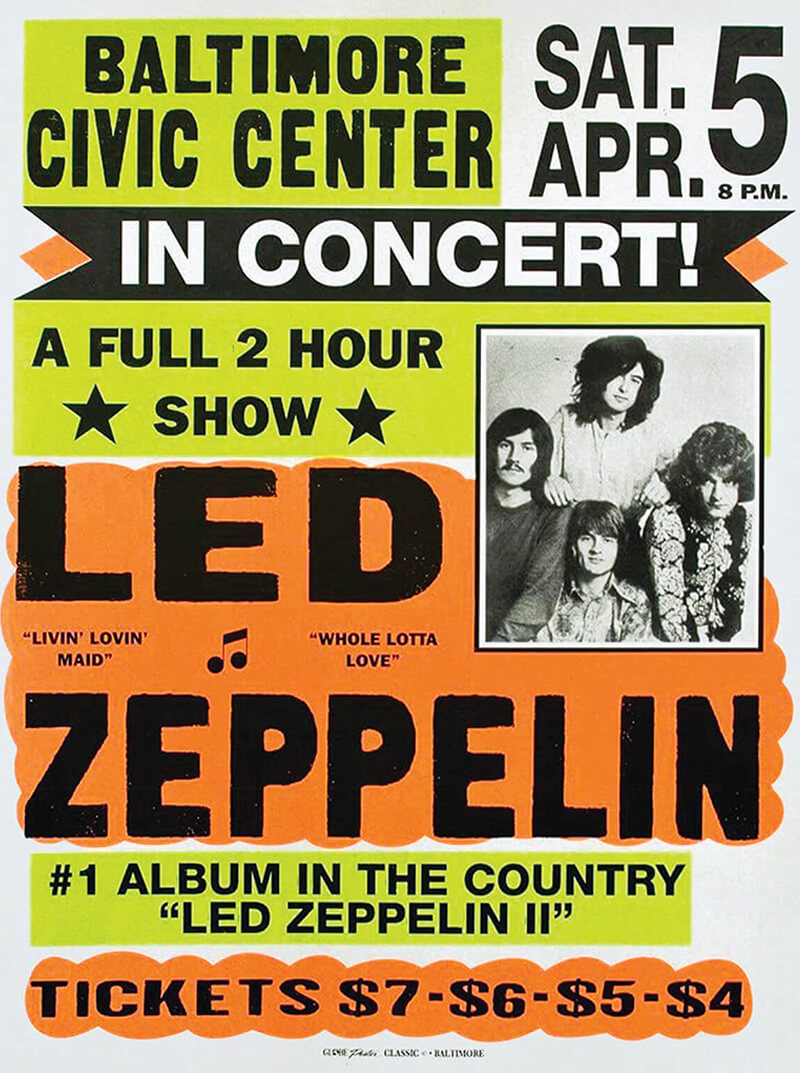
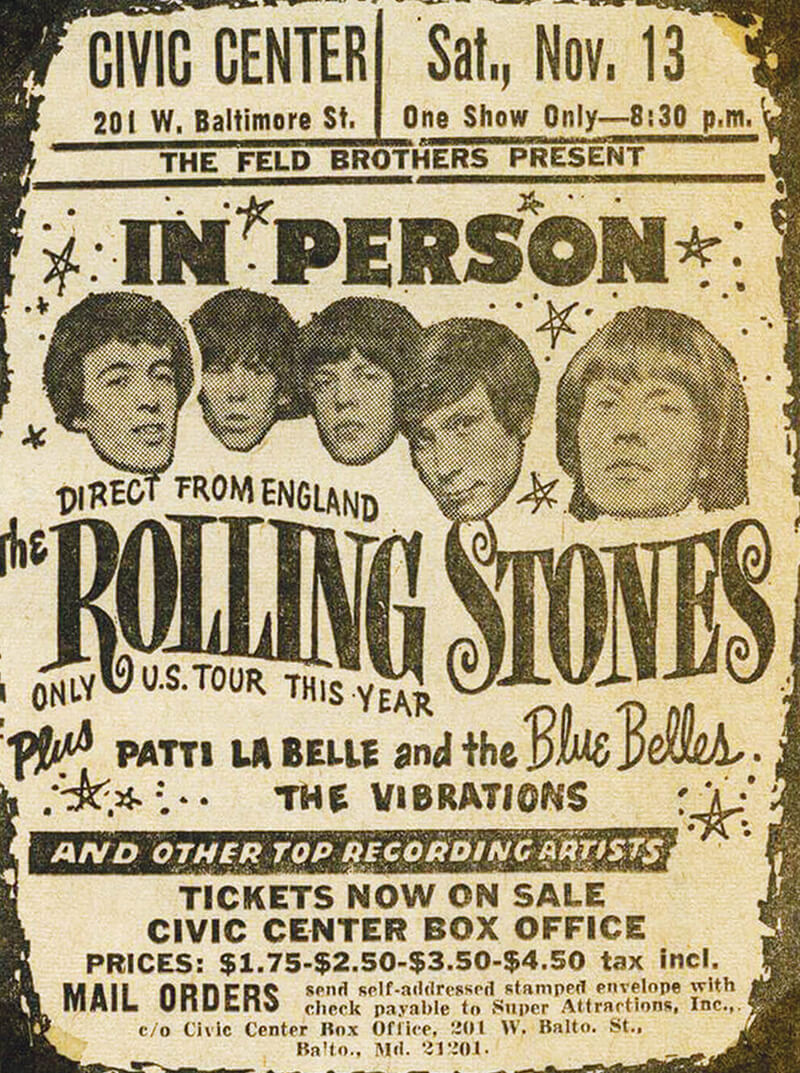
Led Zeppelin Shot Part Of A Concert Film Backstage; The Rolling Stones first appeared at the Civic Center in 1965. —Globe Poster/Wiki Commons
And let’s not forget Wes Unseld and Earl “the Pearl” Monroe starred at the Civic Center for three glorious seasons for one of the most exciting NBA teams ever. Or that Martin Luther King Jr. delivered two speeches there and then-presidential hopeful Barack Obama packed the place.
Yet the arena now undergoing a $200-million renovation, and recently renamed the CFG Bank Arena, has never been beloved. Not like Boston Garden or Madison Square Garden, which opened shortly after the Civic Center and stands as the NBA’s oldest venue. Certainly not like Memorial Stadium, which no one in their wildest dreams imagined the utilitarian concrete box would outlast. Part of the city’s fallout shelter program when it was built, the Civic Center hosted the Clippers home opener in the middle of the Cuban Missile Crisis. What the joint proved to be, in the end, in other words, is indestructible. It has been the building’s saving grace.
“Look, I love my building, and admitting this is hard, it’s like saying that you’ve got an ugly baby, but that’s been the truth,” Remesch says. “And that’s about the change.”
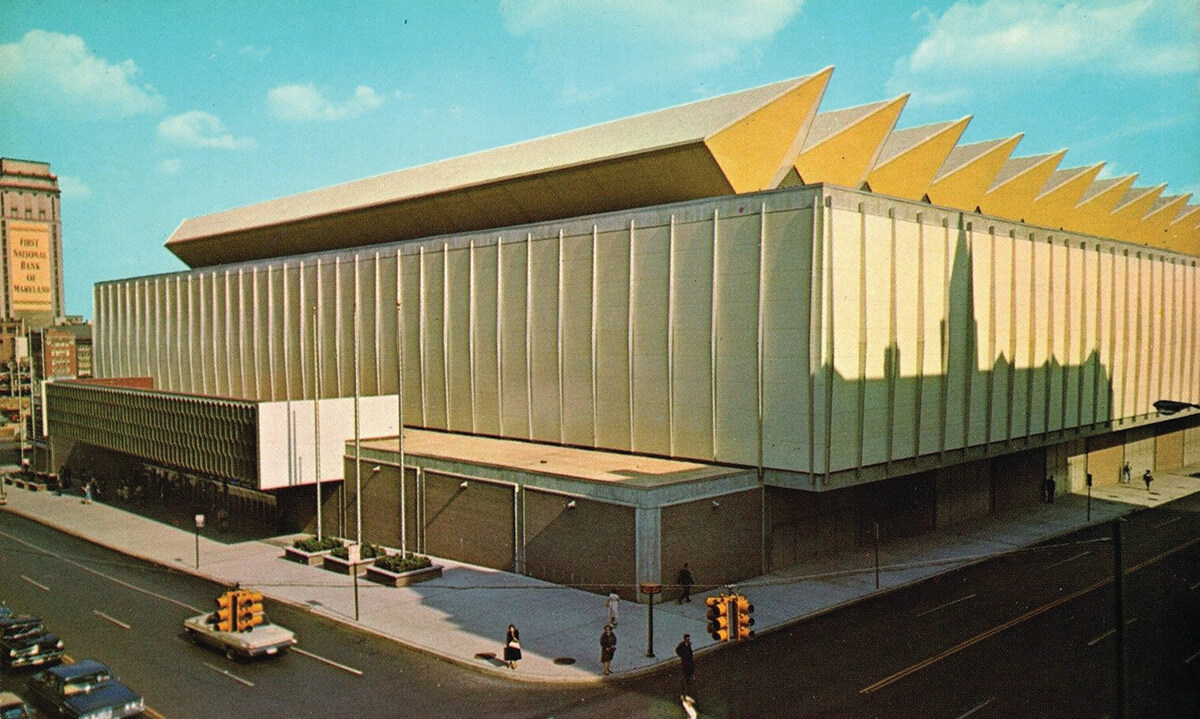
The Original Look of the Baltimore Civic Center, Designed by Arthur Gould Odell Jr. —Wiki Commons

fter 60 years, the aging facility, which seats roughly 14,000 for concerts and a little less for basketball, hockey, and other events, finally closed this summer. But only temporarily and for the right reasons. Namely, a massive privately funded renovation by one of the biggest new movers and shakers in the entertainment and sports arena industry, the Los Angeles-based Oak View Group, which will lease and operate the city-owned venue for the next 30 years.
Let’s repeat that—the city’s largest indoor arena is getting an estimated $250-million overhaul that is entirely privately funded—zero public dollars, no Payment In Lieu of Taxes (PILOT) break from the City Council. Founded in 2015 by Tim Leiweke, who has an old Civic Center connection, and Irving Azoff, the former executive chairman of Live Nation Entertainment, the Oak View Group has already developed four major arenas, including Seattle’s Climate Pledge Arena, home of the NHL’s Kracken, and the $1.1-billion UBS Arena, home of the NHL’s New York Islanders.
In March, they announced their biggest deal to date, a new 20,000-seat venue in Las Vegas. Back in the spring of 2021, they were one of two main companies submitting a bid in response to a city Request for Proposals (RFP) to either fund a major renovation of the existing structure, or a newly constructed arena, at the West Baltimore Street and Hopkins Place site.
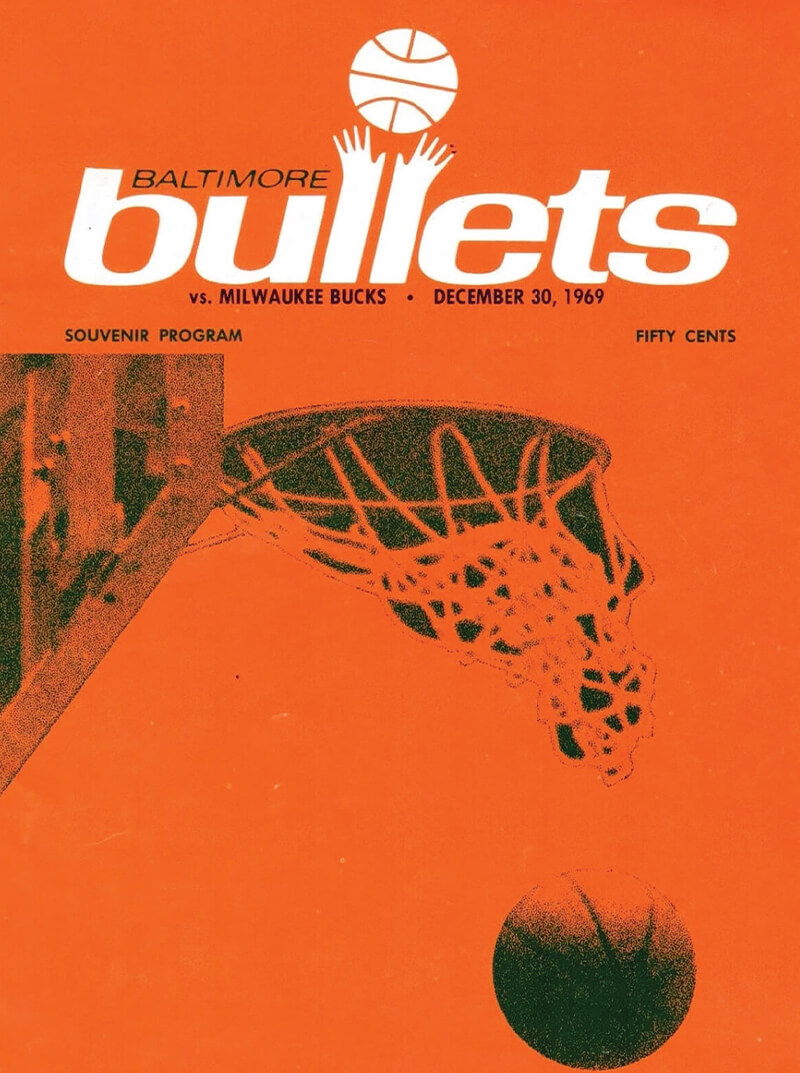
The NBA’s Baltimore Bullets Played at the Civic Center for 10 Seasons before Moving to Landover in 1973. —Wiki Commons
Their main competition was ASM Global, the operators of the venue during its last iteration as the Royal Farms Arena, aka “the Chicken Box.” ASM put together a local team with national reputations in sports and entertainment architecture and urban design, including Mahan Rykiel Associates, Ayers Saint Gross, and Janet Marie Smith, the former Orioles executive who helped build Camden Yards.
The Board of Estimates, however, voted 4 to 1 in November 2021 to approve an agreement with Oak View, which presented genuine superstar power with the involvement of Maryland-born NBA star Kevin Durant and his holding company, Thirty-five Ventures, and Azoff, whose management clients have included, among others, Fleetwood Mac, Steely Dan, Bon Jovi, Lizzo, Harry Styles, Christina Aguilera, and Meghan Trainor. Oak View proposed demolishing the proscenium stage, which limited set-up and views, as well as almost the entire interior other than the core seating bowl (see opening spread). With the existing concrete and structural steel passing all stress tests with flying colors, the concept, basically, is to build an otherwise brand-new venue from the inside out. (Council President Nick Mosby, the dissenting vote, expressed concern Oak View was “was putting lipstick on a pig” and the arena wouldn’t be ready for the CIAA basketball tournament in February. Oak View says the project is on track.)
So, what’s the catch? How does a Los Angeles-based, international company expect to recoup that kind of capital investment in a city whose population has been shrinking since the Civic Center was constructed? The broad plan is not that complicated. Oak View intends to book 20-25 additional shows, including family-friendly fare and the occasional Wizards, Capitals, and Maryland basketball game, bringing the total to 130-140 a year. They’re also envisioning closing off Hopkins Place for an outdoor festival or two once landscaping is completed.
The key is a starkly different focus—less family-friendly fare, bigger acts, and more sex appeal. They vow to create a state-of-the-art venue for concert-goers, but also the acts, enabling major tours hitting the East Coast to set up efficiently and get back on the road just as quickly. While the arena has pulled two or three “A-listers” annually in recent years, Oak View’s goal is 30 to 40 annual headliners. They believe the potential is there to double current attendance and draw more than a million people each year—a figure that would approach attendance at Camden Yards last season—which also translates into more amusement and beverage tax revenue for the city.
The new ownership group has made promises about the amazing lineup it plans to announce for 2023, leveraging Azoff’s and Oak View’s connections. They’re off to an encouraging start. After opening for the CIAA tournament, which was a hit last year, the building will close briefly for final touches before relaunching with Springsteen on April 7. Both acts are playing the Capital One Arena as well. Maybe it means driving to D.C. for shows won’t be a rite of passage for future generations.
“A while back, Mayor Scott asked me if this was real,” says Remesch, referring to Oak View’s aspirations and ability to deliver. He’s speaking from the middle of the arena’s empty floor as some 500 construction workers ply their trades around him. “Better than anyone, I understood where he was coming from. We’ve all been through the plans before that never got off the ground and I got a chip on my shoulder like everyone else from Baltimore about being skipped over for so long. I told him, ‘Yes, Mr. Mayor. I have been doing this a long time. It’s real.’”
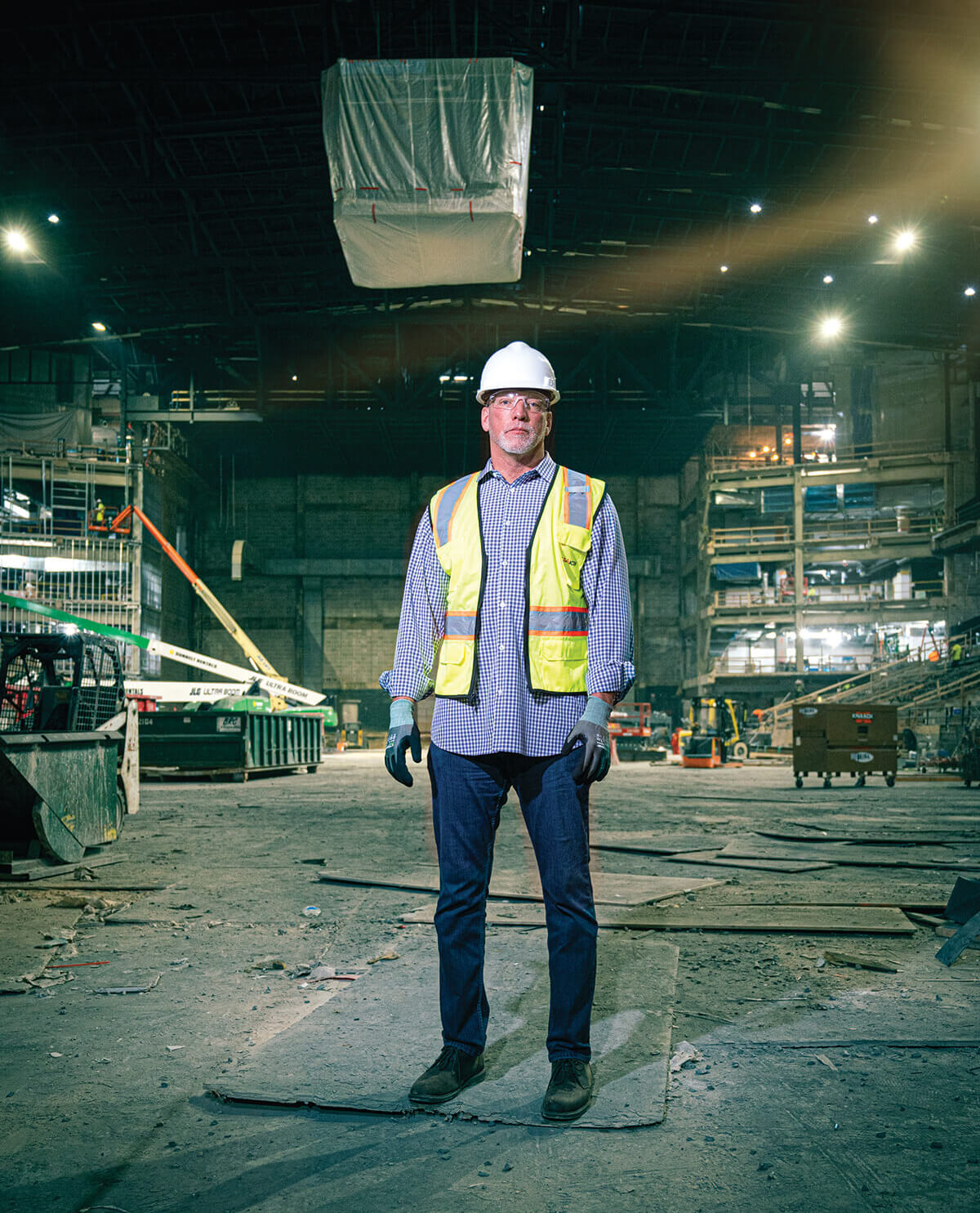
FRANK REMESCH HAS BEEN THE GENERAL MANAGER OF THE ARENA SINCE 2004. —Photography by Christopher Myers
 ver the past three decades, city officials have
looked at easily a half-dozen plans to demolish
the arena. Mostly due to a lack of financing,
none really got moving. Meanwhile, in terms of a
renovation, arena representatives had long been leery of
taking the venue offline for any substantial period—afraid of losing annual events and scheduling momentum.
The COVID-19 pandemic, which forced the cancelation
of numerous events throughout 2020 and 2021, led
city officials to explore new opportunities.
ver the past three decades, city officials have
looked at easily a half-dozen plans to demolish
the arena. Mostly due to a lack of financing,
none really got moving. Meanwhile, in terms of a
renovation, arena representatives had long been leery of
taking the venue offline for any substantial period—afraid of losing annual events and scheduling momentum.
The COVID-19 pandemic, which forced the cancelation
of numerous events throughout 2020 and 2021, led
city officials to explore new opportunities.
In reality, the multi-purpose Civic Center was obsolete when it opened. “What’s the saying? Jack of trades and master of none?” PressBox columnist Jim Henneman, who handled public relations for the Bullets, asks rhetorically. “It was supposed to be a sports arena, convention center, orchestra hall, and a concert venue. My wife and I did go to see Tony Bennett and Judy Garland, who was not in good shape, unfortunately,” Henneman adds. “If you sat in the lower section there were good seats, but if you were in the corners, there were terrible sightlines. There weren’t enough bathrooms. The referees’ and the visitors’ locker rooms were next to each other. Not a good idea. The way the interior was designed left a lot to be desired, let’s put it that way.”
The location, on the other hand, was something of a miracle. Plans for a commission “to study the practical and available location” of a civic center were first put forth by a city councilman in 1955. That same year, 75 business leaders formed the Greater Baltimore Committee, which named the construction of a civic center one of its top priorities. Clarence Miles, the president of the Orioles and the GBC’s first chairman, called it a “pet project.” Business and civic leaders hoped a new facility would help retain the old NBA Bullets, who ended up folding, and the minor league hockey Clippers, who finished the 1956 season in Charlotte after Carlin’s Iceland—their home venue—burned down. A top-flight minor league hockey club was no small honor in an era when the NHL only consisted of six teams.
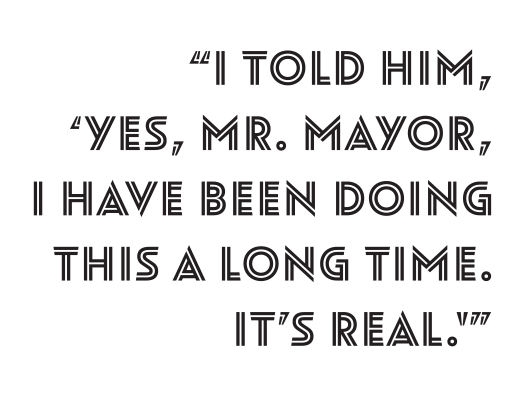
The sense of urgency was such that the General Assembly approved a bond to build a civic center in early 1956, which then appeared to be destined for the Druid Hill Park area that had been home to Carlin’s Iceland and Carlin’s Amusement Park. From the outset, however, the site was hotly debated, with the northwest side of Druid Hill Park, Mount Royal Station, the Key Highway side of the Inner Harbor, Clifton Park, and the current Pier Six Pavilion area all under consideration at various times—amid constant calls to place it somewhere downtown. The tight fit between East Baltimore and Pratt streets and Hopkins Place finally emerged alongside the Charles Center development.
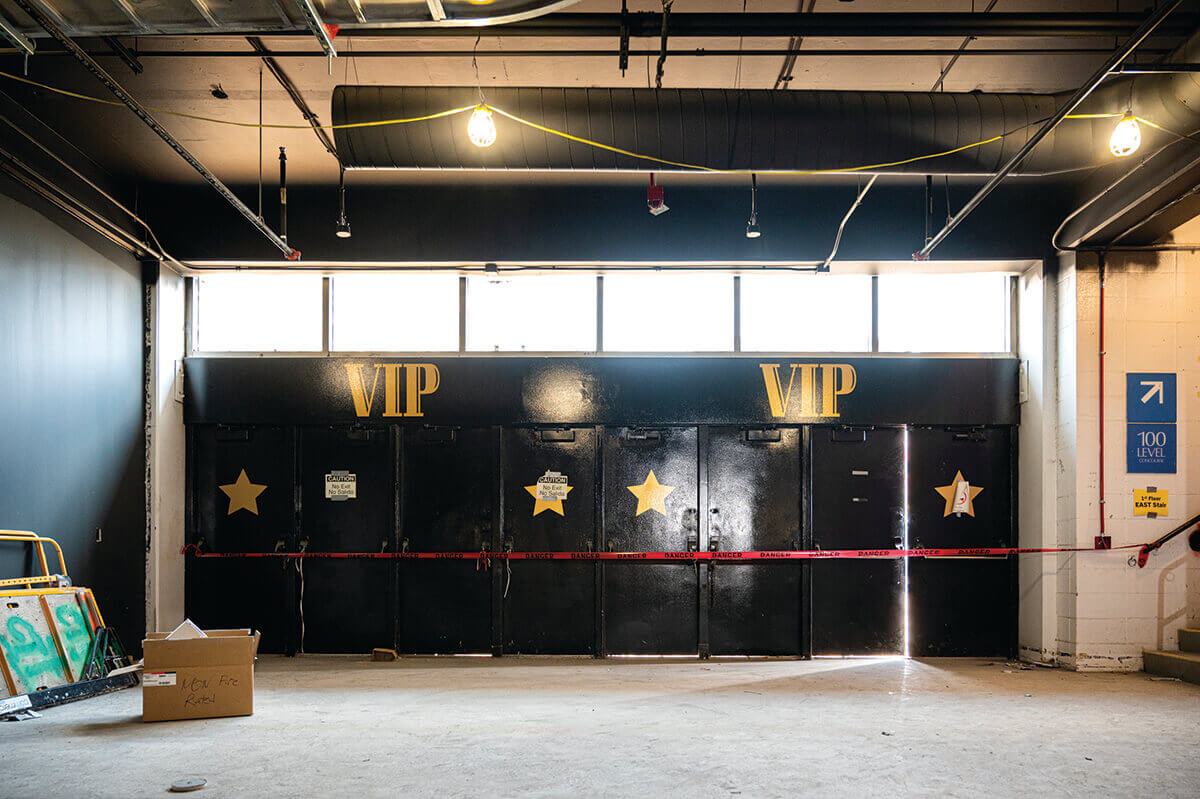
With the Building'S Concrete and Structural Steel Passing All Stress Tests, the Concept Is to Build an Otherwise Brand-New Interior. Other than the Seating Bowl, Little Will Be Familiar.—Photography by Christopher Myers
The Bullets and the Clippers did return, too. Baltimore was such a hockey town in those days that the Clippers outdrew the Bullets for several years of their cohabitation. Other teams arrived after Bullets owner Abe Pollin, a Washingtonian, moved his team to the capital suburbs. (And people wonder why Baltimoreans hold a grudge against D.C.?) The Major Indoor Soccer League’s Baltimore Blast hung a championship banner in the building three years after their 1980-1981 arrival and went on to remarkable success. They now play, however, at the SECU Arena in Towson. The Thunder formed in 1987 and won the National Lacrosse League title in their debut season and played downtown for years.
The Skipjacks eventually replaced the Clippers, the Bandits replaced the Skipjacks, and very briefly, Baltimore became the hometown of a World Hockey Association team—the former Michigan Stags, which folded in January of 1975 and played out the string that season here as the Baltimore Blades. (Interesting aside: A hard-hitting left wing on that club with a ’70s perm named Bill “Goldie” Goldthorpe inspired the quick-tempered character “Ogie” Ogilthorpe of the memorable 1977 hockey film Slap Shot.) One more franchise footnote: The 1974-1975 Baltimore Banners, a World Team Tennis charter member, signed Jimmy Connors, who won three Grand Slam titles in 1974, but nonetheless folded after a year due to poor attendance.
The lesson learned, according to Remesch and other Oak View representatives, is that whatever the initial excitement around attracting another indoor football team—we’ve had those, too (Baltimore Brigade, we hardly knew ye) or perhaps a WNBA franchise, it’s not the best use of the now-CFG Bank Arena. With the Wizards and Capitals down the road, it doesn’t make sense to build a new 20,000-plus arena in the non-existent hopes of attracting an NBA or NHL club with only 52 weekends a year for scheduling. Not only do such franchises only fill half the seats, they largely bring the same set of fans each game.
Contrast that with the prospect of booking, along with Springsteen and Blink-182 out of the gate, and now Lizzo, Janet Jackson, and Anita Baker over five days in mid-May, the Eagles, Journey, Bruno Mars, Ed Sheeran, Eminem, Harry Styles, Rihanna, Celine Dion, Kendrick Lamar, Beyoncé, Cardi B., Taylor Swift, Luke Bryan, Adele, and Megan Thee Stallion—all expected to tour in 2023—week after week. (Remesch says a couple of these artists are already booked, but he cannot disclose who yet.) When you share an Amtrak corridor with four of the top 11 metro areas, it’s easy to forget that the diverse Baltimore-Columbia-Towson area ranks as the 20th largest metropolitan region and can fill the building for every genre.
As if to drive the point home, 13-time Grammy winner Pharrell Williams, who has come on board as an investor, joined the recent naming rights announcement at the arena. (Beyond a commitment to hire 45 percent women- and minority-owned companies and vendors, city officials emphasized Oak View’s pledge to bring in minority investors when they awarded the bid. Harbor Bank of Maryland, a Black-owned bank headquartered in Baltimore, is a member of the loan group.)
“This city has so much to offer through its growing music scene, entertainment, and sports,” Williams said. “It’s clear the time is right for Baltimore Arena to breathe new life into the region.”
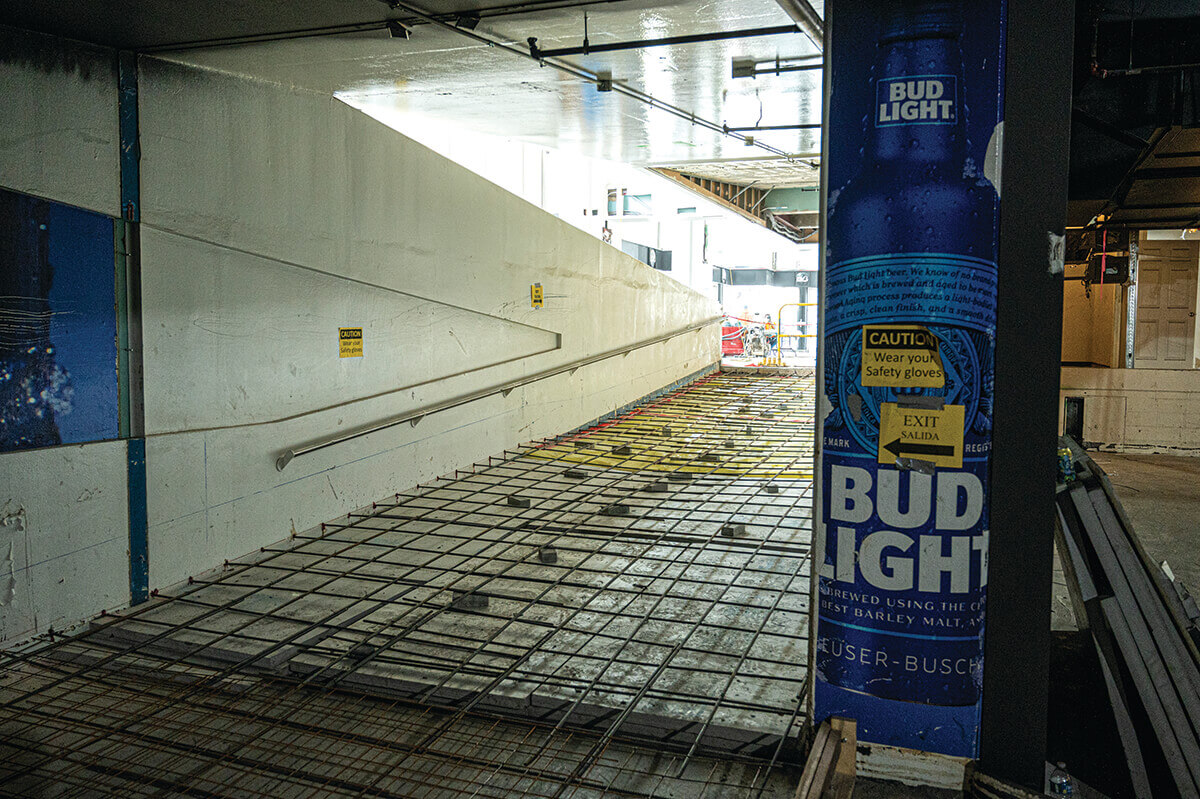
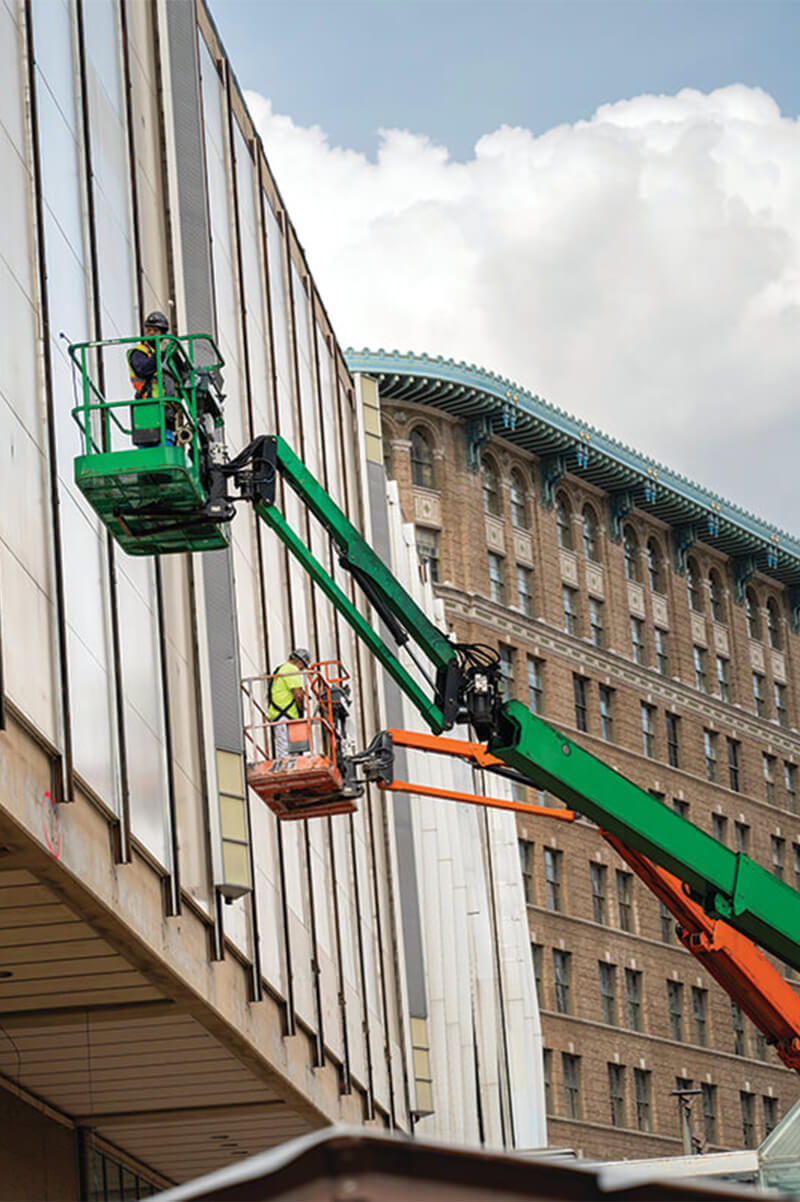
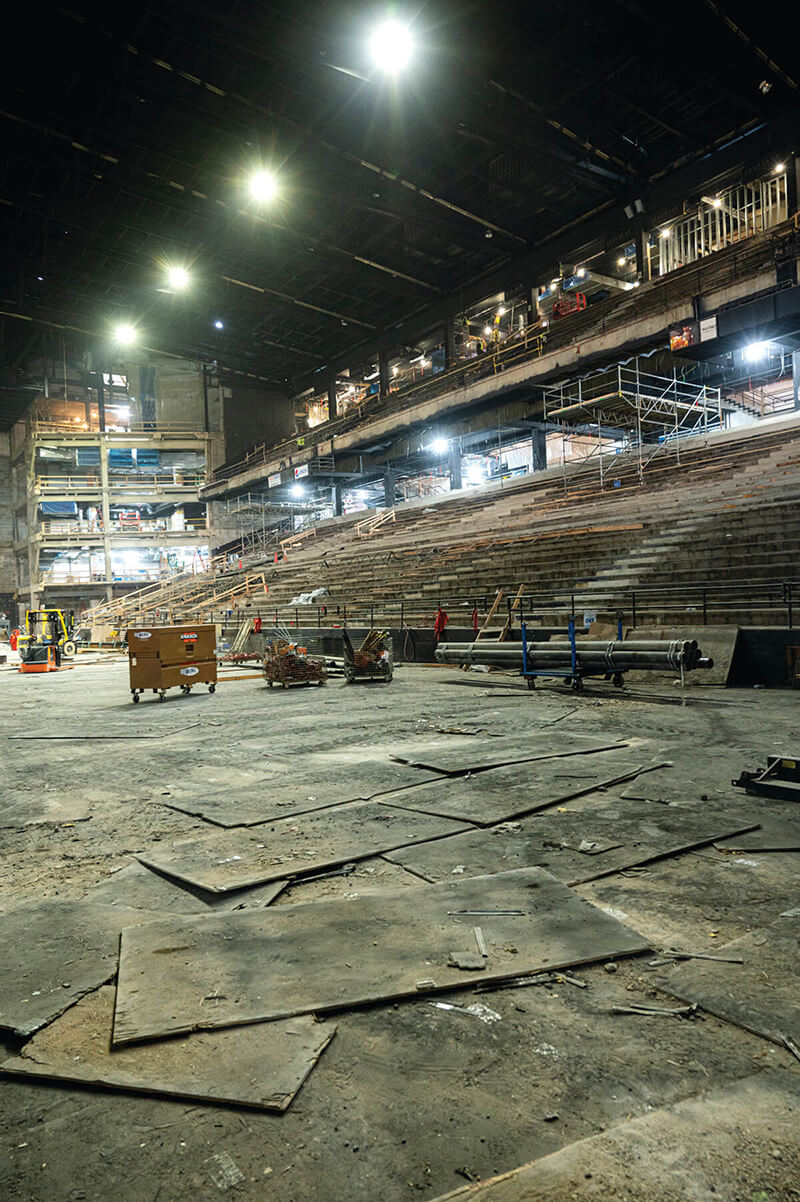
After opening for the CIAA basketball tournament in late February, the overhauled arena will close briefly for final touches before relaunching with Bruce Springsteen on April 7. The Oak View Group says the construction remains on schedule. —Photography by Christopher Myers

ouncilman Eric Costello, whose district includes the arena, and other city leaders, including former Mayor Kurt Schmoke, believe a successfully renovated and booked arena could become a catalyst to the central business district and the westside Bromo Arts District. If it comes to fruition, that broader economic impact could be the arena’s most important legacy in 10 years—not who played here on any given night.
“As far back as the early ’90s, proposals were coming to my desk to expand the arena toward Howard Street, in hopes of sparking activity in that area,” Schmoke says. “I fully agree that 30 to 40 ‘A-listers’ make a completely different impact than a minor league team. No question.”
Downtown Baltimore is already one of the few growing residential areas in the city and Costello is optimistic that trend, and the transformation of office buildings into apartment buildings, will only continue. He points to the new Lexington Market and repurposed properties currently under development in the neighborhood around the arena and the city’s historic shopping district, once the busiest blocks in the state. The recently converted 11-story City Crescent building at 10 South Howard Street and the Redwood Campus Center apartments at 300 West Redwood sit around the corner from the arena. Nearby, the highly anticipated eight-story MLK4 building in the University of Maryland- Baltimore’s new BioPark is expected to open in 2024. The huge, long-stalled Metro West complex, which used to house the Social Security Administration, is expected to soon welcome 1,200 Maryland Health Department employees.
“We have a lot of work to do, but a 21st-century, world-class arena immediately becomes a downtown anchor,” Costello says. “It’s a big piece of the puzzle to revitalizing downtown, especially the westside of downtown.”
Overall, some 3,500 state employees are headed downtown after efforts to revitalize the State Center complex were killed by Governor Larry Hogan. (An unfortunate loss, however, for furthering the westside development.) As Costello suggests, there’s a way to go toward fully revitalizing the city’s downtown core. For example, the site of the demolished Morris A. Mechanic Theatre remains a giant hole in the heart of the central business district. The owner of that property remains intractable in his demands of a 25-year tax break to redevelop the site into even more apartments, Costello says. The Baltimore Convention Center, which opened in 1979, remains in need of major expansion—a project Schmoke, Costello, and everyone else agrees will require state money. On the other hand, the Orioles fortunes and attendance at Camden Yards trended up this year.
Finally, Harborplace, recently purchased out of receivership by local developer David Bramble, is getting redone after decades of stagnation. Although Bramble’s plans have yet to be unveiled, the General Assembly already earmarked $67.5 million for the Inner Harbor redevelopment and $166 million overall for the revitalization efforts for the harbor and downtown. Baltimore state Senate majority leader Bill Ferguson calls it “a crucial, crucial moment for the city.
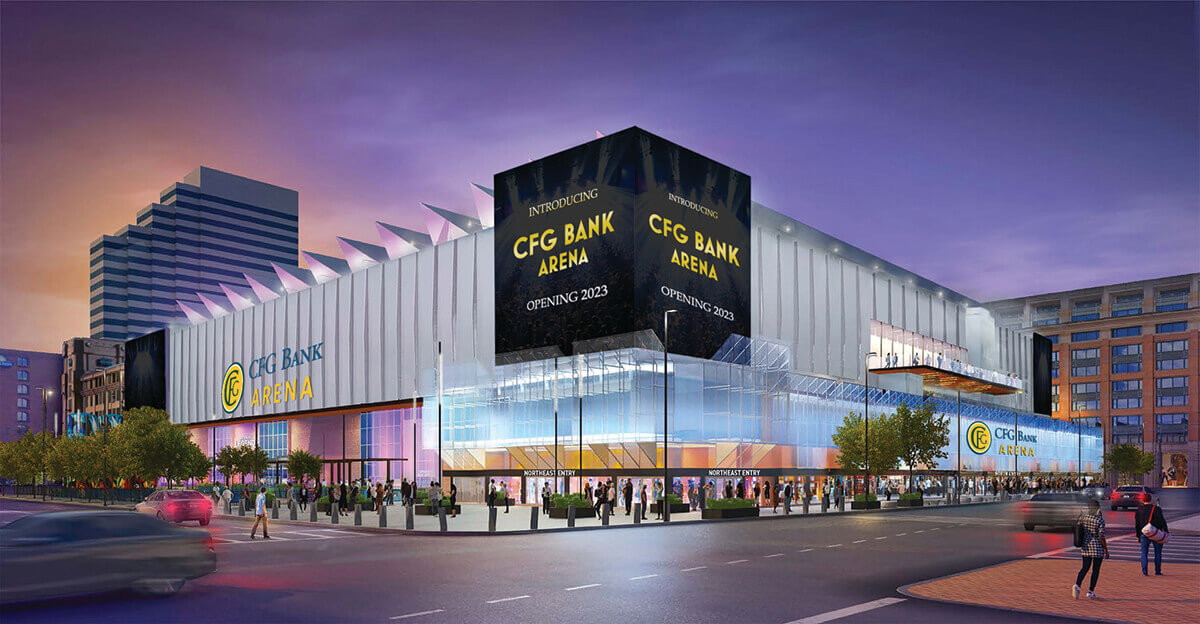

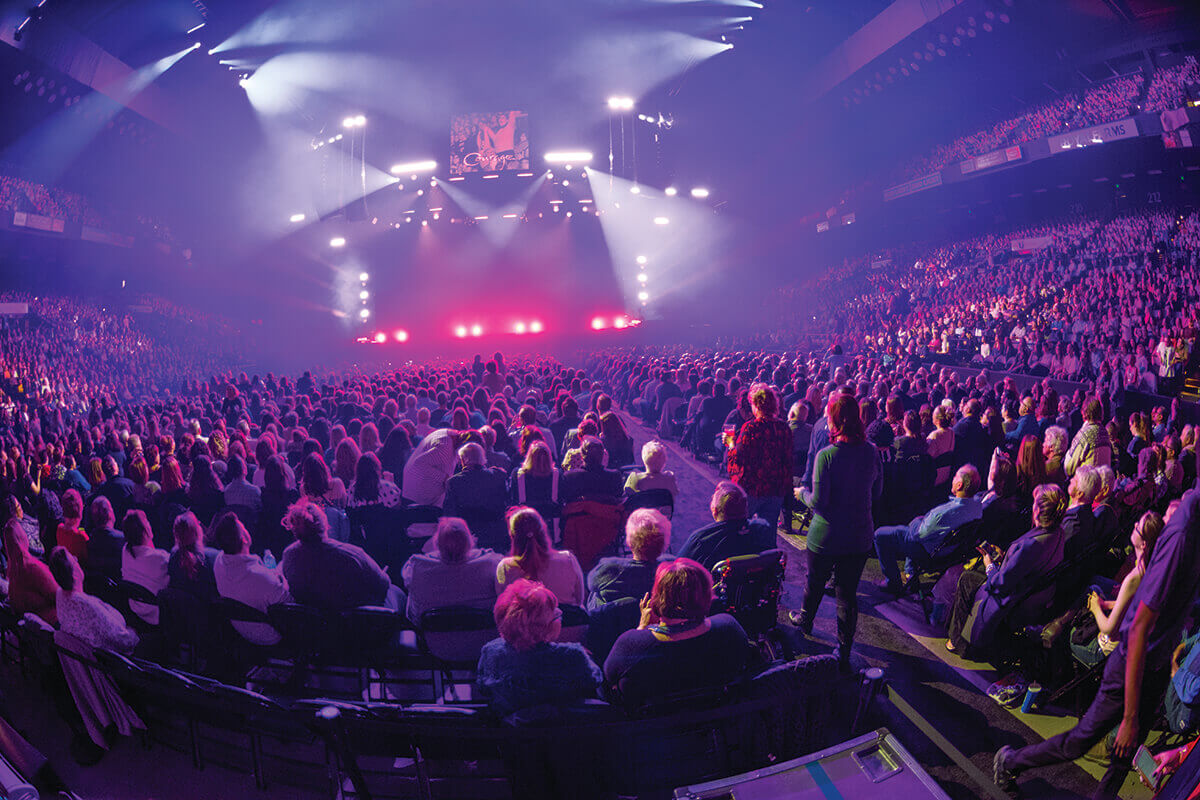
Oak View Group Renderings Of The Newly Renamed CFG Bank Arena, Which Is Scheduled To Open In February 2023 For The CIAA Basketball Tournament and then reopen for Bruce Springsteen in April. —Courtesy of the Oak View Group

ak View Group founder Tim Leiweke says the whole situation reminds him of his first experience in the city. He was just 23 and recently had been named the general manager of the Baltimore Blast, the youngest general manager in sports at the time.
“I was bushy-tailed and bright-eyed, and I got to meet Mayor [William Donald] Schaefer, who I loved,” Leiweke recalls with a smile following a recent media event at the arena. “I got here the same year the Aquarium opened, and I was watching what was going on with [Jim] Rouse at the Inner Harbor. I lived two blocks from this building. I lived downtown, played downtown, and went to every festival that was happening at the Inner Harbor. It was fantastic. I am happily married now, but I was happily single at the time and having a lot of fun.”
Leiweke’s expansion team, for what it’s worth, was very successful on the Civic Center’s indoor pitch, making the playoffs, attracting excellent support, and generally becoming the talk of the MISL that first year. “I was young and went on to do a lot of other things,” continues the 65-year-old Leiweke, who in a remarkable career across the NBA and NHL would eventually serve as president and CEO of the Anschutz Entertainment Group, which owns the Los Angeles Kings, the Los Angeles Galaxy, part of the Lakers, and the L.A. Live entertainment complex. “But in my mind, I always wanted to come back to Baltimore and do something like this. We’re going to leverage all of our connections and relationships. We’re going to roll up our sleeves and make this work.”
Leiweke says he’s excited about working with new governor Wes Moore and Mayor Scott. This is the beginning of the investment for Oak View, he says, the start of a 30-year commitment. Baltimore has not been known as a music city, he acknowledges, but he believes the old arena, while profitable, held the city back. He’s confident performers and their agents are going to give Baltimore a chance with this arena, and when they do, they are going to sell out.
“This is a great project for us,” Leiweke says. “Not only because I get to return something to Baltimore, which gave something to me, but because I think the city is in a unique position and presents a unique opportunity. You see this city and you get the feeling it is less than the sum of its parts, and it should be more than the sum of its parts.”
